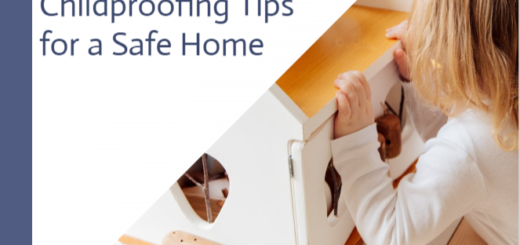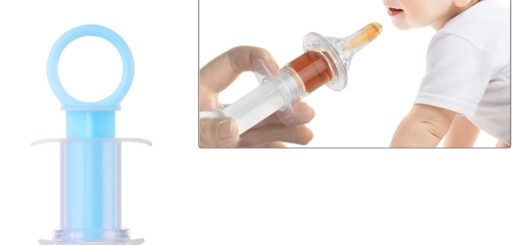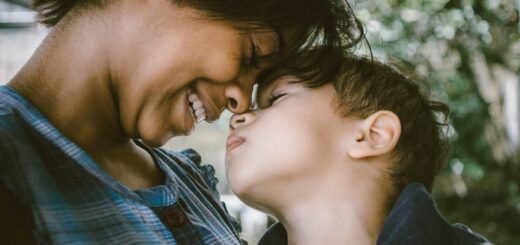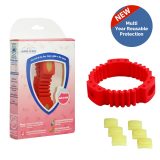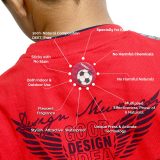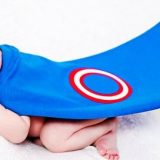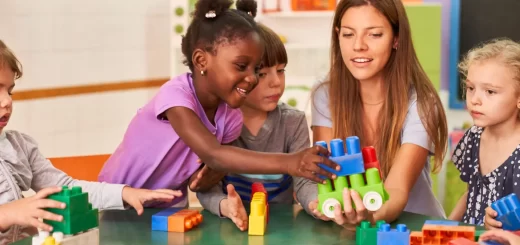Why do Responsible Parents need Newborn Bathtubs?
There are a lot of new things to get used to when you’re the parent of a newborn baby. Feeding, washing, pacifying, and even curing an injured infant are all things that new parents must become used to when they welcome a baby into their life for the first time. Bathing the baby, on the other hand, is among the most difficult duties that parents face. Each new phase in their lives, the baby or toddler presents a new problem during bath time, which is why parents must be always on the go, learning new things and unlearning old ones in order to keep the infant safe in the bathroom. Newborn bathtubs are one of such invention that will ease the bathing process not only for the child but also for the parents.
While the parents become used to bathing the rapidly developing infant, good newborn bathtubs are one of the most effective instruments they can utilize. The bathtub is a solution to many of the issues that parents experience in the bathing area, including handling the baby, giving the baby a full bath, and preserving hygiene while bathing. The bathing tool has been discovered to be incredibly successful and popularly in demand, owing to the fact that it remains a parent’s companion through all of the challenges that come with the baby’s growing age and physical ability.
When it comes to washing your energetic little one, you, too, need to choose the right bathtub to meet your needs and make your life easier. When you’re looking for a bathtub for your little baby, you’ll come across a wide variety of tubs with distinct uses and features. There will be enough possibilities to drown you in an avalanche of tubs. However, you must choose a tub that is ideal for your needs while also providing enough value for money, as well as convenience of use and performance.
If you can find all of these in a single bathtub, you’ve discovered your reliable companion as you embark on the monumental chore of keeping your infant clean and hygienic. When shopping for the proper tub for your kid, there are a few things to consider so that you don’t buy something you won’t be able to use on a regular basis. You wouldn’t want anything you paid good money for to sit in a corner collecting dust, which is why it’s critical to make an informed decision when purchasing a bathtub for your infant.
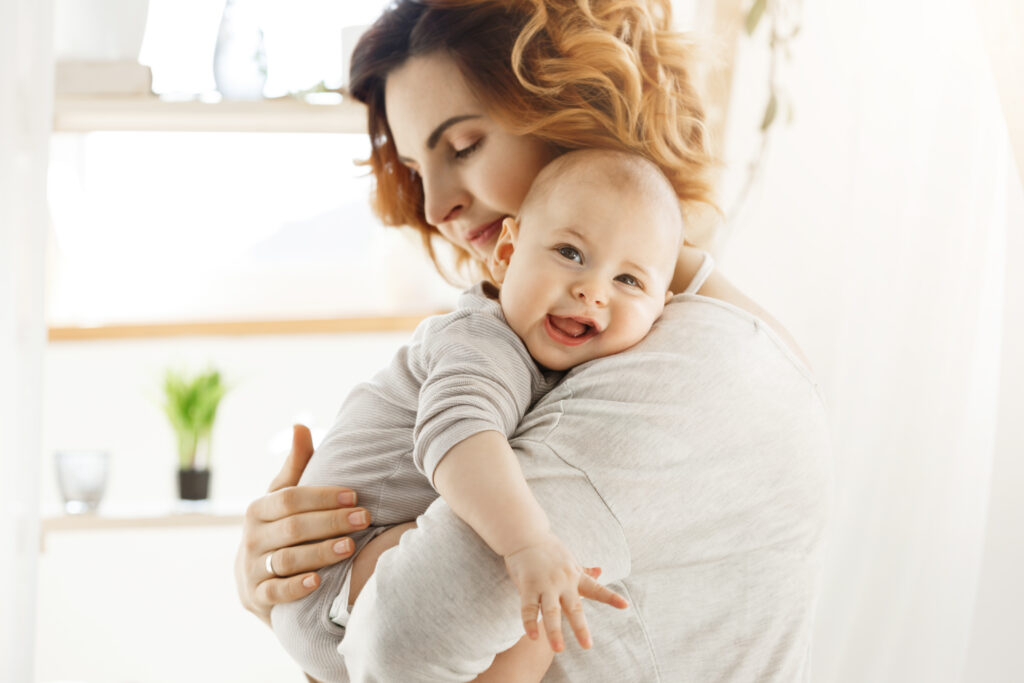
Depending on your baby’s age group, below is a list of essentials to consider while purchasing a bathtub:
6 months old:
This is the age at which babies are unable to sit up on their own and must be bathed while lying on their backs. Babies cannot even keep their heads up during the first few months of life, which is why you should opt for a bathtub that is suitable for infants. You can get a standard bathtub coupled with an infant safety bathing belt or another attachment that can be attached for child safety. This will assist you in controlling the baby while also allowing you to fully clean the baby. Bathing little newborns requires a lot of effort because:
- It’s a new experience for both the parents and the babies, and small babies become anxious when they come into contact with the water, which causes them to move their tiny arms and legs, making the work more difficult for the parents.
- Babies that are swaddled all the time sweat more and get dirty in extremely small spots, such as between their little fingers, which can be difficult for parents to clean while holding the baby in their hands.
Because of these factors, you should get a suitable baby bathing tub while the infant is still very young and new to the world. It’s critical that you can not only keep your tiny infant under control and secure, but also keep your baby’s bathing basics close at hand so that you don’t have to move around too much or bother yourself looking for items like a bar of soap, shampoo, and so on.
2 years:
This is the age when babies begin to learn how to have fun while bathing. This is when they are first introduced to bathing and splashing water, moving around in the bathroom, and grasping objects. Also, This is the period when it’s critical to maintain not only bathing essentials within easy reach but also to keep your infant safe in the bathtub with an anti-skid surface. When you keep your baby’s bathing basics near at hand, you can keep a careful eye on how he or she is moving in the tub, and the anti-skid surface prevents the baby from falling and getting hurt while having fun in the tub.
While many parents want their children to be in charge during bath time, it is nearly impossible to prevent them from having a good time while they practise their water splashing talents. As a result, it is vital to ensure that you select the appropriate newborn bathtubs for your requirements.
2+ years:
When babies become toddlers and recognise their potential to cause havoc no matter where they are, they are in this age group. This is the age when newborns become both the most entertaining to watch as they come up with new antics and the most challenging to handle as they are always full of energy. While toddlers can be exhausting for parents in general, they are especially difficult when they are in the toilet and have new things to explore in an environment that they only get to spend a brief time in. This is the age when kids can’t stop themselves from jumping into the tub when it’s bath time.
As a result, parents must ensure that not only is the bathtub antiskid, but that the water temperature in the tub is also known. Before allowing little toddlers into the bathtub or bathroom, parents must be able to monitor the temperature of the water to ensure that they do not injure themselves. You should seek a tub that has a digital display that tells you the temperature of the water to assist you in organising bath time before allowing your child to start having fun.
Overall, while choosing newborn bathtubs, be sure that the material used in its construction is safe for the baby and that the tub’s finish is flawless. It’s also crucial to make sure you can acquire basic but essential features like foldable tubs to conserve room, tubs with hooks to hang the tub up when it’s not in use, and tubs with smooth and easy-to-clean designs to keep them clean and hygienic.
Necessary Preparations:
- Close windows for keeping draughts out and offer ventilation.
- Before starting the operation, gather all of the articles.
- Keep the table against the wall, with a basin on one end and the tray with the goods on the other, so that the baby is protected by three inches and there is no risk of the infant rolling off the side.
Equipment Required:
- Sponge or Clean Washcloth
- Luke Warm Water
- Clean blanket or Towel
- Baby Soap
- Clean Clothes
- New Diaper
Preparing the bathing setup:
Bath time poses two major dangers: drowning and scalds. You can prevent these concerns and keep baths exciting and safe for your infant by following these simple tips:
- While showering your kid, don’t get busy on the phone. You’ll be less prone to getting sidetracked.
- Make absolutely sure you have all you need, such as a washcloth, toys, shampoo, lotion and clean clothes, and a clean nappy, accessible. You’ll be able to keep your hands and eyes on your infant at all times this way.
- Ensure that any bath lotions, shampoos, and electrical gadgets are out of reach of your child.
- Remove your jewellery and watch. Please wash your hands.
- Before you put your kid in, make sure the water temperature is between 37 and 38 degrees Celsius.
- If possible, dry and clothe your infant on the floor with a towel. It’s more secure than using a changing table. If you’re using a changing table, keep one touch with your infant at all times.
- After your baby is dry and dressed, place them in a safe environment such as a cot.
- As soon as you’ve finished with the bath, drain it. When you’re not using the bath, take out the bath plugs.
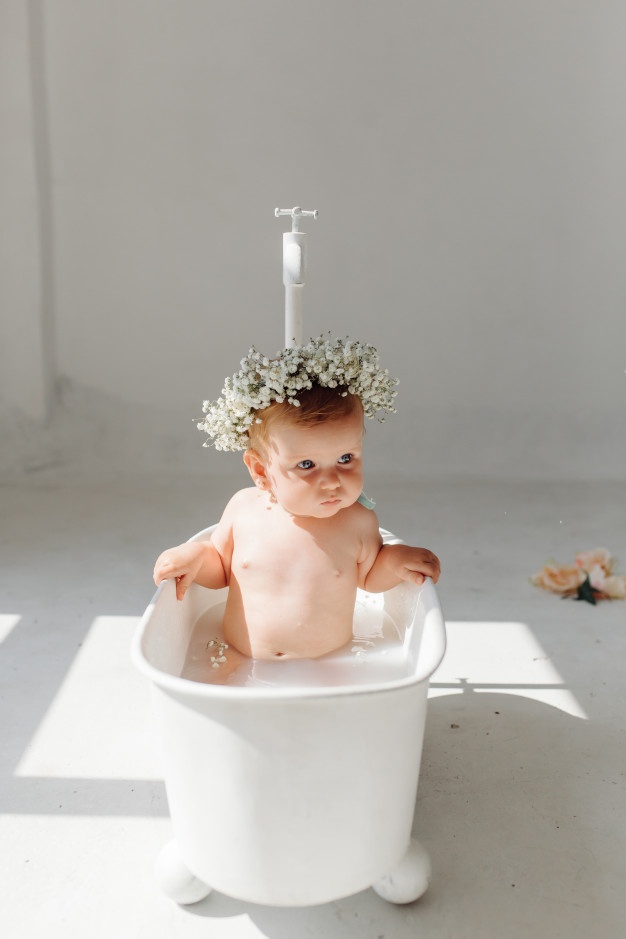
The Correct Bathing Procedure:
- Prepare the newborn bathtubs with warm water less than 3 inches deep. Check the water’s temperature.
- Remove your baby’s clothing. If providing a sponge bath, lay them on the pad or in a bowl of water.
- Clean your baby’s eyelashes gently before adding soap to a rag. Begin at the internal corner of the eye and work your way toward the ears with a clean patch on the cloth.
- After that, just wash your baby’s face with water. Do not wash their faces with soap.
- Wash the outer area of the ear with clean water. Cotton swabs, such as Q-tips®, should not be used inside your baby’s ears.
- Using water, wet your baby’s head. On the washcloth, apply a small amount of light soap or shampoo. From front to back, lightly massage the sponge over their head. Keep the soap away from their eyes. Rinse their head thoroughly with fresh water and pat dry with a soft towel.
- Reach beneath your baby’s back and head with your arm while they’re laying in the basin.
- Prepare a soapy lather using your palms or a rag. Begin just at the neck and work your way down your baby’s body. Clean in between your fingers, feet, and skin creases.
- To wash the diaper region, use a soapy cloth or your hands.
- Begin from the front and work your way back to the bottom.
- Need not retract the foreskin of the penis to clean it, if your kid has not been circumcised.
- With a clean, moist washcloth, remove the shampoo off your infant.
Baby Sponge Bath
For the first few weeks, gentle sponge showers are ideal until the umbilical cord falls out, the circumcision heals, and the navel heals fully.
The fundamentals of cleaning a baby are as follows:
- First, undress the child by holding his or her head in one hand. Leave the diaper in place. Cover baby in a sheet and only expose the parts you’re washing.
- Cleanse one region at a time with a baby bath washcloth. Begin behind the ears and work your way down to the throat, elbows, knees, and between the fingers and toes. Look for creases beneath the wrists, behind the ears, and around the neck.
- So that the baby doesn’t become cold, the hair comes in at the end of the bath. While babies have not much hair, the small wisps that do exist can be sponged. To avoid getting your eyes moist, tilt your head back slightly. The shampoo isn’t required; simply use water.
- Remove the nappy and sponge from the baby’s tummy, bottom, and genitals now.
- Little girls should be washed from head to toe. Don’t panic if there’s some vaginal discharge and don’t try to clean it all away. Let the foreskin alone if a young kid is not circumcised. If you’ve had your penis circumcised, don’t wash it until it’s healed.
- Pat the infant dry gently. The skin will become irritated if you rub it.
Baby Tub Bath
It’s an opportunity to attempt a tub bath once the umbilical cord has fallen off and the circumcision and navel have healed completely. If your infant becomes cranky during the transition, return to sponge bathing for a week and try again later. Bathing a newborn is a learning experience for both the baby and the parent.
Find thick plastic newborn bathtubs that are the correct size for your infant. The tub will not move at bath time if it has a slip-resistant backing.
Avoid using bath rings or bath chairs. These are not for infants, but rather for older kids who can actually sit on their own.
Keep the very first tub baths as brief as possible. Just 2 or 3 inches of lukewarm water should be in the tub. Support the baby’s head with one hand, then gradually reduce the other.
- Clean the hair and face with a washcloth or a baby bath sponge. When rinsing, place your palm across your forehead to shield your eyes. Clean the rest of the baby gently with water.
- Use a gentle baby shampoo in combination with a baby cleansing.
- Allow handfuls of water to wash over the baby’s chest by cupping your palm.
- Pat the infant dry gently. To seal in moisture, use baby lotion all over.
- He’s ready for a new diaper now. To prevent irritation, apply diaper ointment.
- Once bath time is finished, cover the baby in a towel as soon as possible, covering his or her head for warmth.
Post Bath Tips:
- Using a clean towel, pat your infant dry.
- Use lotion if you desire. Applying lotion to your baby’s face is not a good idea.
- Brush and comb the hair of your child.
- Their nails should be cleaned. When necessary, trim the fingernails with baby clippers. Make tiny, small cuts just above the white nail line to accomplish this. This will prevent you from trimming the nail too short. You can also use a nail file to file the nails. To avoid scratching your baby’s face, keep their fingernails short.
The scalp of your newborn may appear dry or scaly. This is referred to as a cradle cap. These items can aid in the treatment of cradle cap:
- After shampooing, apply a thin layer of baby oil to their hair. It should be left till the next day.
- The next day, brush your baby’s hair and scalp to remove old tissue, then shampoo his or her hair.
- Soapy water should be used to clean the brush and comb, then wash and dry.
- Please consult a physician if you still have any queries.
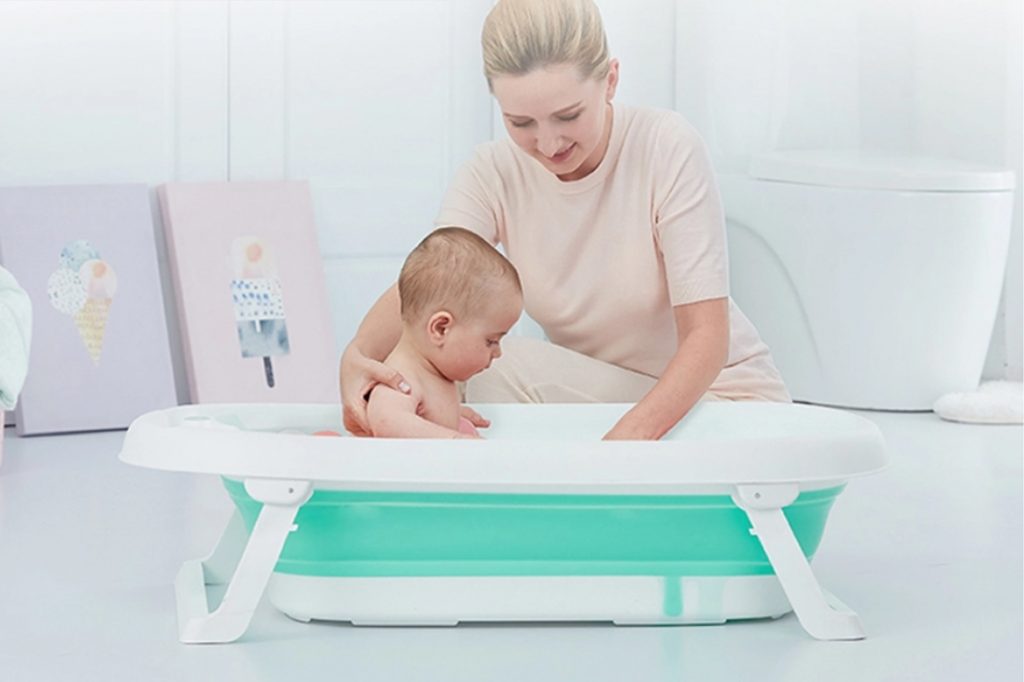
The Importance of a Newborn Bathtubs:
When you have a new arrival in the family, you will soon notice that there are certain shopping sprees and purchase carnivals that are devoted to the new baby. Right from clothes to feeding accessories to sleep equipment and much more, you buy it all for your little one. However, one thing that you should include in your list of shopping should be a bathtub as a bathing accessory. You can get different varieties of newborn bathtubs that range from simple inflatable pools to tubs that are collapsible to the ones that are digitized to show you details like water temperature. No matter what your choice is, it is essential that you buy one for your baby as soon as possible.
A lot of parents have come to the conclusion that there are lots and lots of benefits of having a bathtub when you have to bathe your baby. No matter what age your baby is or whether your baby sits or doesn’t, a bathtub can always be a good investment looking at the kinds of advantages that the humble bathing accessory offers. If you need to make sure that you are well versed with the benefits of the newborn bathtubs before you actually put your money into it, here is a detailed list of reasons why you should consider the magical bathing companion for yourself and your baby:
Safety:
One of the biggest concerns that most parents have while giving a bath to a baby is whether the baby is safe in the shower as they give it a bath. Whether you are holding the baby or whether the little one sits independently, it is always risky to give them a bath without any safety construct around. This one single reason should be true enough for parents to be motivated to buy a bathtub that offers safety for the baby by not just keeping it contained within the periphery of the tub but also by offering an anti-skid floor that keeps the little one from slipping. It makes sense to opt for a tub that comes with the anti-skid alternative for the best protection of your baby.
Comfort:
The comfort that a bathtub offers is not limited to just the baby but also the person bathing the baby. It definitely cannot be a comfortable thing to hold on to the little one constantly as you bathe them with a single hand. Instead, if you are able to make the babysit in the tub, you can comfortably give it a relaxing bath and the baby also remains calm and composed all through the bath time. When you are relaxed and comfortable you can be sure about your baby enjoying its bath, which is most important for it to be accustomed to the hygiene ritual.
Hygiene:
Ensuring hygiene is also much more manageable when you have a bathtub at your disposal. When your baby is comfortable in the bathtub and you are not tiring yourself out with the effort of handling the baby and giving it a bath, you can focus better on the hygiene factor. Giving a thorough bath to the little one is much more possible when it is in the bathtub and you have nothing else to worry about except for getting the baby scrubbed and clean.
Fun:
Anyone that is raising a baby will agree that when there is a fun factor involved all tasks relating to the baby become that much easier. It is the same for when you need to bathe your baby. You can easily add the fun factor to the bathing action by playing with water, adding bath toys or simply sharing fun moments as you bathe the little one and all of this is possible when you choose to use a good tub. You need to have a sturdy and quality-oriented bathtub for your baby to truly enjoy their bath time and for you to introduce new and innovative bath time games. When you do not have to worry about anything else relating to your baby’s bath, you can also be sure about coming up with new and interesting ideas to have fun with your little one as they bathe.
Convenience:
A well-designed bathtub can be the ultimate tool of convenience for parents when they set out on the hygiene mission for their little ones. You need to look for newborn bathtubs that come with little pockets or spaces that will add the convenience factor to the accessory. It is possible to ensure that you have all your other bath accessories handy, such as the soap, brush, shampoo, etc. by putting them into the niches provided in the tub. You also need to look for a bathtub that can be easily stowed away when not in use so that you may have utmost convenience in maintaining it since it does not get too dirty when it is stored away while not in use. The value additions in a bathtub may seem like small factors but the truth is that they go a long way in adding convenience to your life.
Also, Convenience is something that can never get too much for the first few years when your baby is still small and requires your assistance in everything that they do.
Cleanliness:
It is also possible to make sure that you maintain complete cleanliness in the process of the bath when you have a bathtub to help you out. You do not have to put your baby in contact with the unclean surfaces of the bathroom when you have a dedicated bathtub for them. This is one of the biggest boons that parents can get while bathing the baby. There may be colonies and colonies of germs and little bugs in the crevices between tiles of the bathroom floor that can come in contact with your little baby’s delicate skin and cause harm. In order to avoid such circumstances and keep your baby safe from infections and rashes, you need to have a bathtub where the baby can be made to sit comfortably without the fear of it coming in contact with anything that may be unclean or unsafe for them.
Routine:
Bringing routine and discipline into the life of a little one is highly important and this is best established while the baby is still young. With the help of accessories such as a bathtub, you can condition the babies to a routine of bathing and put them into the habit of cleaning themselves and maintaining hygiene while they are still in the crib. Remember, it is never too early to stress about healthy habits when you are raising a baby and that is why you need to use innovative methods of reinforcing good habits such as the use of a bathtub for bath time so that they understand the importance of the act and relate it to something that they should do every day even when they are old enough to take a bath on their own.
When you are set to achieve so many benefits from the use of something as simple as the bathtub, there is no reason why you should not go ahead and buy it. However, it is also important that you choose the most reliable seller to make your purchase. It is essential that you are able to get a bathtub that is safe and perfect for your baby which is why you need to look for a seller that is completely quality-oriented in their services.
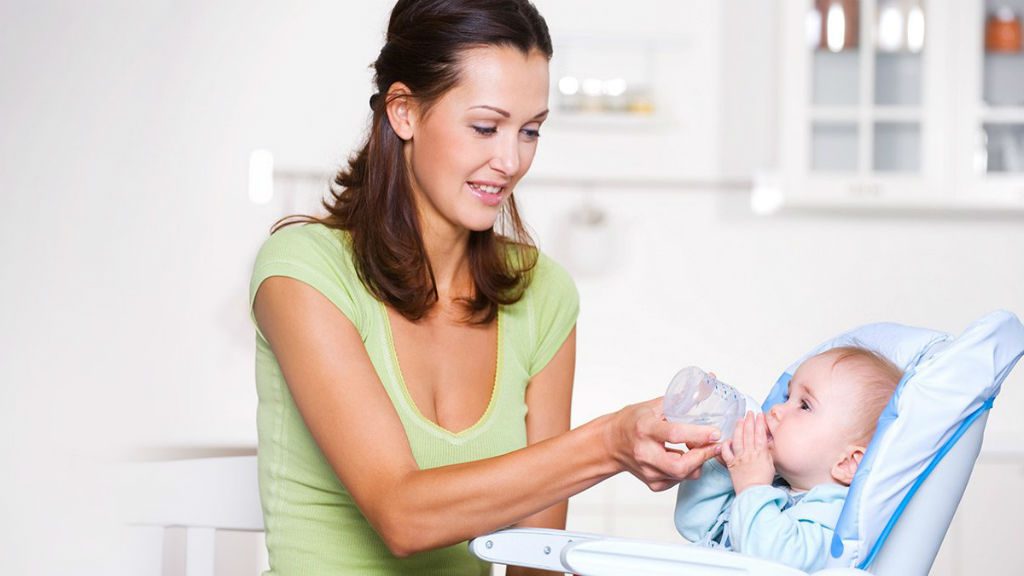
Important Tips:
Keep these suggestions in mind while selecting newborn bathtubs for your infant.
A tub that is too big allows your infant to slide around more freely, putting him or her at greater risk of drowning. On the other side, a too-small one can be uncomfortable and difficult to clean. Do you have a hard time deciding which size to buy? “Several manufacturers provide weight or other size guidelines with their infant baths,” notes Dr McKenzie.
Before choosing newborn bathtubs, think about how you’ll clean it. The more crevices in your bathtub, for example, the longer it will take to clean. Choose a tub that is easy to clean and dry to reduce mildew or mould buildup.
Ways to prevent Drowning:
Drowning is a leading cause of death among children under the age of five.
Drowning is a risk for very young children. This is due to their top-heavy nature. They can abruptly fall into or under water and drown in just a few millimetres of water. Also, drowning can happen in as little as 20 seconds. Children can drown without gasping or splashing, and you may not realise they’re in danger. The key to preventing drowning is constant adult supervision.
These suggestions can also help you be safe in the bathroom:
- Only enough water to wash and play with. For a kid who would sit up on their own, belly-button height is sufficient.
- If you’re using a bathing seat or a cradle, keep an eye on your youngster at all times. A bath seat isn’t intended to be used as a safety device. Bath seats will not keep your kids safe if you are not present.
- If your bath doesn’t have a non-slip surface, use a non-slip bathmat.
- When you’re not using the restroom or the laundry, close the doors. This will prevent young children from independently accessing taps or water sources.
- Put plugs out from the reach of children to prevent them from filling baths or sinks.
Ways to prevent Burns:
Because young children’s skin is so delicate, bath water that is overly hot can easily scorch them. The simplest approach to avoid burns is to ensure that water is given at a highest temperature of 50°C to your basin, bath, or shower. This isn’t, however, a bathing temperature. To achieve the proper bathing temperature, you must still combine cold and hot water.
This means that using a water thermometer or your wrist and elbow to evaluate the bath temperature is also necessary. The heat should be warm but not scorching. The water is just too warm for a child’s skin if it flushes when you stick your elbow in.
These pointers could also help you avoid scalds and burns in the bathroom:
- Keep your child out of the bath until it has reached a safe temperature.
- Always start with cold water. Filling newborn bathtubs with warm water first is never a good idea. Your child could scald themselves if they placed their limb in the water. In the bath, swirl the water to avoid hot and cold patches.
- If your sink has a mixer tap, combine the warm water with cold one. Applying more warm water, rather than straight hot water, will raise the temperature. Your child could get burned if they put their finger in the stream.
- When you’ve finished running the bath, move the lever to the cold setting if you have a mixing tap. Ascertain that your youngster will not be harmed.
- Make absolutely sure the heated water tap is completely turned off. When the bath is finished, pump ice water through the tap for a few seconds to ensure that no one is burned.
- Consider investing in anti-scald protection for your home. You can consult a certified plumber for suggestions on how to preserve warm water at a comfortable level.
- Avoid leaving your child with an older sibling who does not have the capacity to switch on the warm water faucet.
- Never leave your toddler unattended in the restroom or bath. Your child may be able able to turn on the heated water tap but not be able to turn it off.
Newborn Bathtubs: The Types
Babies should not be bathed in your adult tub. It’s impossible to keep your baby afloat while kneeling over the sink, squirting shampoo onto your washcloth, and carefully washing his slick body. By the end of the ceremony, your back and knees will undoubtedly hurt! Most parents prefer portable newborn bathtubs as a safer choice. There are six different varieties of infant baths available today.
Standard Tubs: A simple, low-cost plastic tub is always a good choice. For younger babies, smaller ones are frequently placed in the sink, and many feature a contoured shape that allows them to sit in a slightly upright position. Because the cloth or mesh will keep your baby in place, several basic tubs also come with a removable baby bath sling. When your baby is old enough to sit up on her own, she can progress to a larger plastic bathtub that will fit in your adult tub.
Convertible: Convertible kid tubs feature changeable positions and are designed to grow with your baby. This means the tub can be used for newborns, infants, and toddlers.
Inflatable: These space-saving tubs may be deflated for storage and transportation. Many come with a suction cup or an attached hook to allow you to hang the tub to dry naturally. A disadvantage is that you’ll have to re-inflate before Baby’s next bath, which can be a pain.
Foldable: Foldable baby tubs collapse for simple storage in small spaces, making them ideal for parents who live in apartments, condos, or smaller homes. If you’re going to use a fold-up tub, make sure it’s solid and won’t leak.
Standing: These constructions have solid frames that raise Baby to your height. This means you won’t have to bend or squat to bathe your baby!
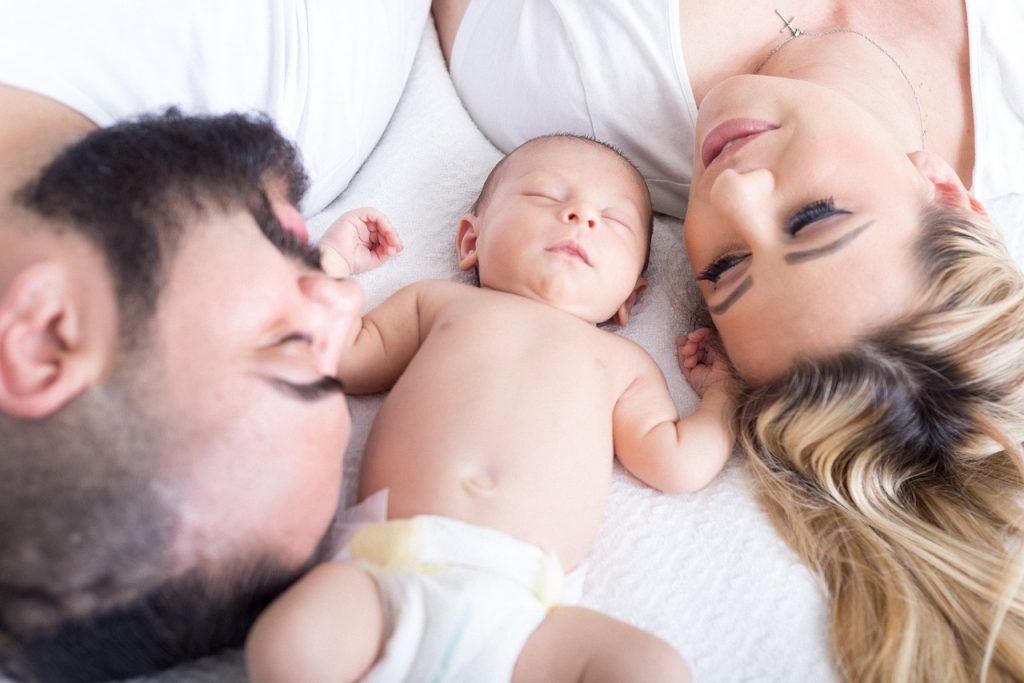
Newborn Bathtubs: The Features
While additional features aren’t essential, they can help you and your baby enjoy bath time more. Take a peek at a few of our favourites in the gallery below.
- Whenever the water overheats, many baby tubs contain colour-changing strip indicators that change colour. On some tubs, temperature gauges are also available. Bathwater should be around 100 degrees Fahrenheit. Also, set your hot water system to 120 degrees Fahrenheit to prevent it from overheating.
- To minimize burns, cross-check water temperature using your elbow or wrist, even though the tub does have a thermometer. If the tub does not come with a temperature indicator, you can purchase one separately.
- Newborn bathtubs with smooth sides and an overhanging rim is easier to manage and far less likely to harm your baby. (Be careful not to move the tub when the child is in it!)
- Choose the newborn bathtubs with an anti-skid bottom to keep a soapy baby in place. Only use foam pillows if you’re sure your baby won’t damage apart and eat them.
- Many experts recommend filling the baby tub with 2 – 4 inches of water. A carved or painted line from the inside of the tub serves as a guide to discourage overfilling.
- After reaching over to bathe your baby, the very last thing parents want to do is lift a heavy tub and empty it. You may quickly and simply remove the water by using a drain plug.
Do you need specially designed Newborn Bathtubs?
Motherhood is both a blessing and a responsibility, and every decision you make affects your kid. As a result, you must always make the best decisions for your baby’s health. When it comes to buying baby products, Safe-O-Kid is the best choice available for you. Here is why?
We work as a parent-focused firm since we are run by people who are also parents. We understand a parent’s concerns about their child and hence supply you with baby items that are both healthy and safe for your child. Also, We perform rigorous and stringent quality checks on the product you purchase before sending it to you. As a result, we ensure that your kid receives the greatest product possible during his developmental journey.
